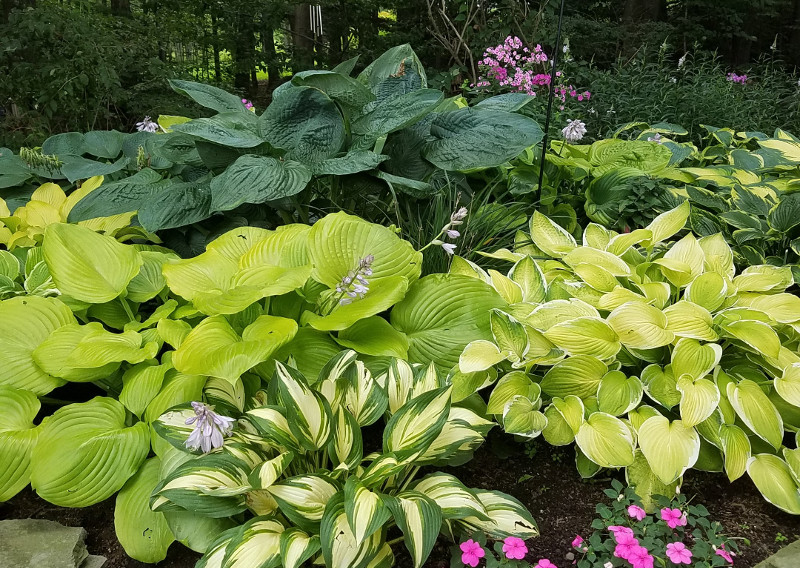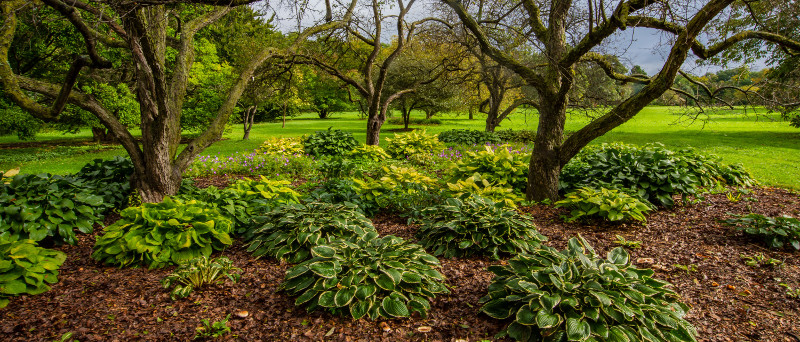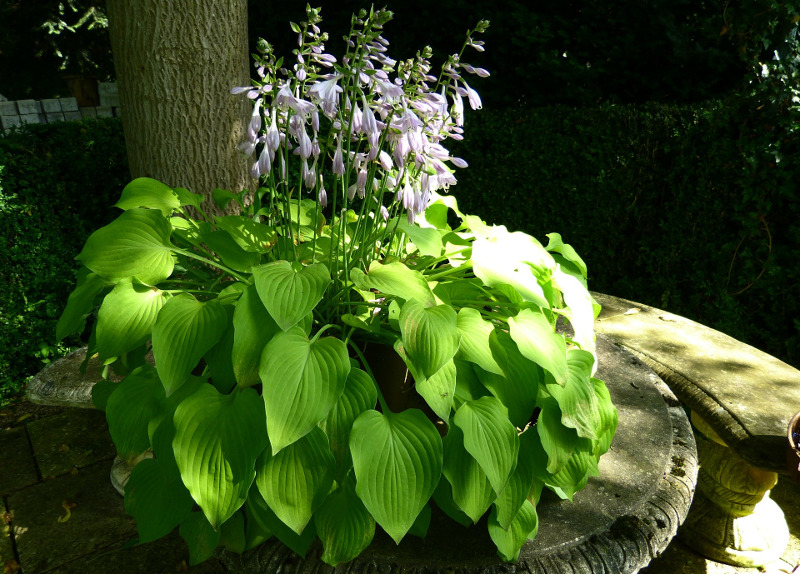Hostas are a beautiful leafy plant that boasts many shades of green on it’s leaves. Native to northeast Asia, this plant is listed in the “easy to care for” category. Hostas grow in zones 3-8. It does not need much fertilizer; however, if your soil is not in good shape or the plant is not thriving you may need to feed the plant. Rich soil and a lot of water is just as important for hosta health as is fertilizer.

New hostas planted in the spring will need a good starter fertilizer to help establish the roots.
Established hostas grow best with a slow release 10-10-10 fertilizer applied in the spring. It is not necessary to fertilize in the fall and winter as the plant goes dormant.
How to Fertilize Hostas
Hostas thrive in neutral soil in the pH range of 6.5 to 7.6. If your area has poor soil, you can supplement it yearly with compost. This will add to the nitrogen, potassium and phosphorus levels which are important for garden rich soil. Using organic matter also helps with drainage.
In the spring, an application of a slow release fertilizer with newly planted hostas is recommended. Once the plant is established, use a 10-10-10 granular fertilizer around the base as the plant emerges. Less is better when it comes to fertilizing hostas. Too much nitrogen can make the leaves turn brown or curl.
If you are concerned about the quality of your soil, you can also look into purchasing a soil testing kit.

Best Time To Fertilize Hostas
Hostas are one of the most, easy to care for plants. Planting them in moist, compost rich soil located in a shady area is all they really need. To ensure vibrant green leaves, feed your hosta in the spring when the leaves begin to pop out of the ground. For best growth, fertilize it every 4 weeks. Do not feed the hostas mid to late summer. This can cause new growth to start which could be easily damaged by oncoming frost.
Adding compost to the soil on a yearly basis is always a good idea. It helps the quality of soil and aids in better drainage.
Best Fertilizer For Hostas
The best hosta plant food is a slow release NPK 10-10-10 fertilizer. Those three numbers stand for the amount of Nitrogen, Phosphorus, and Potassium in the fertilizer. Slow release fertilizers feed the plant each time it rains or the plant is watered. Apply this fertilizer in the spring before the leaves grow, as the granular can burn the leaves.
You can use a regular release fertilizer, but be careful of nitrogen levels in these fertilizers. Too much nitrogen too fast can make the leaves curl or turn brown. Hostas thrive in compost rich soil. If you have healthy soil, that is more important than fertilizer. Using a product, like Miracle Grow, can quickly feed your hosta and make it look good for a short time. But Miracle Grow does not promote the health of the soil.

Hosta Fertilizing Tips
- Feed in the spring as leaves pop out of the ground
- Use a 10-10-10 slow-release fertilizer
- Rich healthy soil is important
- Do not over fertilize
Warnings
-Always wear protective gloves and a face mask when handling chemical fertilizers.
-Closely follow all directions and storage guidelines that are on the fertilizer label.
 |
Author Chris Link - Published 01-04-2021 |
